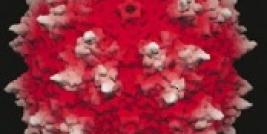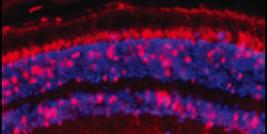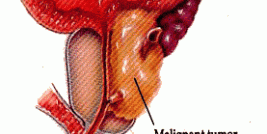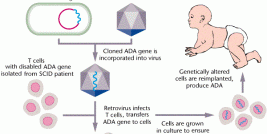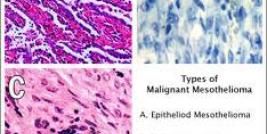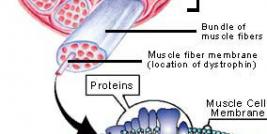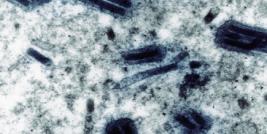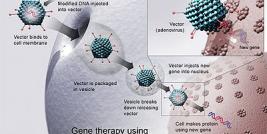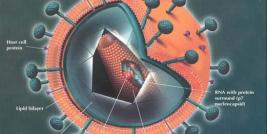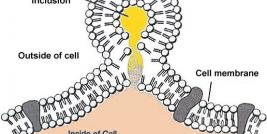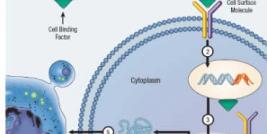Gene therapy can also be used to treat life-threatening infections where no other treatment is available. In this case, genetic information is specifically introduced into infected cells with a view to prevent the effective replication of the target pathogen. In this section we describe some of the approaches that have been adopted in the treatment of the most prevalent infectious diseases.
1. AIDS/HIV
HIV (human immunodeficiency virus) is the virus that causes AIDS (acquired immunodeficiency syndrome). HIV destroys certain white blood cells called CD4+ T cells. These cells are critical to the normal function of the human immune system, which defends the body against illness. When HIV weakens the immune system, a person is more susceptible to developing a variety of cancers and becoming infected with viruses, bacteria and parasites. It is for this reason that HIV infections are ultimately fatal, as the body can no longer fight off infections that it normally can deal with quite easily.
2. Hepatitis/HBV
One of the major causes of hepatitis is infection with the Hepatitis B virus (HBV). HBV itself does not directly cause damage to the liver. Rather, the body's immune response to the virus paradoxically causes the damage. Thus, in an HBV infection, the body's immune response to the virus is responsible for both the elimination of the virus from the body and recovery from the infection. Yet, at the same time, the injury to the liver cells is caused by that same immune response. Hepatitis B virus is spread or acquired through exposure to infected blood or the body's secretions. The highest concentrations of hepatitis B virus are found in the blood, semen, vaginal discharge, breast milk, and saliva. About one third of the world's population has been exposed at some time to HBV. Moreover, approximately 350 million individuals worldwide are chronically (long duration) infected with this virus. As a result, the complications of HBV infection lead to two million deaths annually.
3. Gene Therapy Approaches
The gene therapy approaches used to treat both HIV and HBV are much the same, as the ultimate aim is to stop viral replication in infected cells and to stop viral spread to other uninfected cells. RNA interference represents the most promising approach in the treatment of infectious disease as it is one of the most effective means of preventing the proper functioning of target genes. The ultimate aim of anti-viral or anti-microbial therapy is to prevent the replication of the pathogen in question, and this is best achieved by targeting the molecular mechanisms that drive its replication. One can use RNA interference to specifically turn-off the expression of a pathogen's genes without affecting the gene expression of the infected cell. The result is that the pathogen is crippled and no longer able to spread to new cells. Effective RNA interference can be achieved by either chemical means (where short interfering oligonucleotides are administered to infected cells) or genetic means (where vectors encoding for short hairpin oligonucleotides are administered). In both mechanisms the short oligonucleotides interact with the messages derived from the pathogen's genome resulting in their degradation and the inability of the pathogen to effectively express its genetic material. RNA interference in the treatment of infectious disease is at an early stage, but it represents the most promising novel therapy currently employed in the laboratory.

